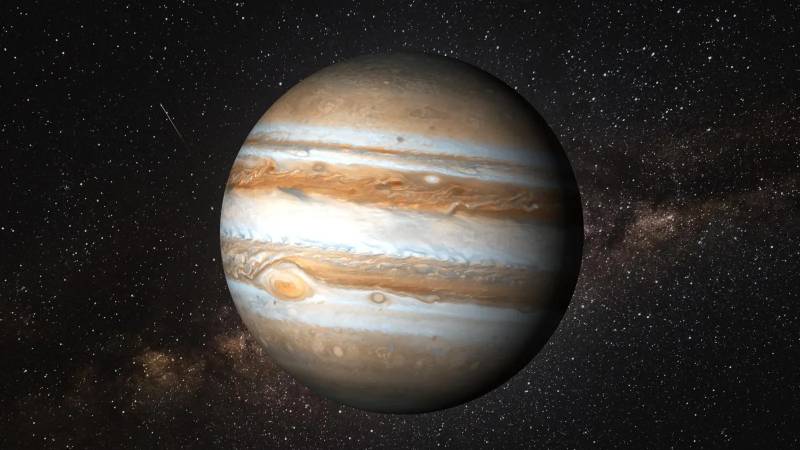It’s possible that the stormy weather in the Bay Area might clear up in time for stargazers to see Jupiter glistening in the night sky tonight.
The fifth planet from the sun is predicted to pass within five degrees of the waxing gibbous moon on Thursday night as dusk falls. The Chabot Space & Science Centre in Oakland’s staff astronomer, Ben Burress, said, “That’s less than the size of your fist held up to the sky.” “At sunset, the pair will be high in the east, visible to anyone as long as the weather cooperates. They will move westward through the night, setting a bit after 2 a.m”
Like all planets, Jupiter won’t twinkle like stars do; instead, it will appear as a brilliant dot in the sky with a somewhat yellow or golden tinge, according to Burress. A pair of binoculars will come in handy if you wish to have a look; you should be able to see distinct characteristics on the lunar surface that are invisible to the naked eye. Jupiter’s disc and its four major Galilean moons, Io, Europa, Ganymede, and Callisto, could possibly be visible.
According to Burress, Saturn can also be seen in the low western sky until around nine o’clock at night.
Even while the occurrence isn’t particularly rare, it is nonetheless interesting to observe. Every month, the moon completes a full orbit around the sky, passing through each planet. However, rare occurrences, such as the moon appearing next to two, three, or even more planets, can happen, according to Burress, depending on how the planets are positioned relative to one another during their orbit. Astronomy fans were treated to a “great conjunction,” sometimes known as a “Christmas star,” on this particular night in December 2020. Jupiter and Saturn were at their closest point in 400 years, producing an exceptionally dazzling glow.
Unfortunately, according to Alexis Clouser, a meteorologist with the National Weather Service’s Bay Area office, skywatchers will have less than optimal viewing conditions this year.
“It will be drier but it looks like it’s still going to be fairly cloudy,” Clouser stated over the phone on Wednesday morning. “I will say it looks like the North Bay, particularly far northern Napa and Sonoma counties, will have a better chance with a few breaks and partly cloudy skies between 10 p.m. and 1 a.m.”
If anything, NASA says you may still try using a small telescope or binoculars to observe the asteroid Vesta, which should be visible for the rest of the month.
- Jerry Rice Award History: Every Winner of the FCS Freshman Award - December 13, 2025
- When Do New Episodes of Taylor Swift’s The End of an Era Drop? | Schedule, Dates & Updates - December 13, 2025
- When Does ‘Matlock’ Return? 2026 Premiere Date Guide - December 12, 2025





